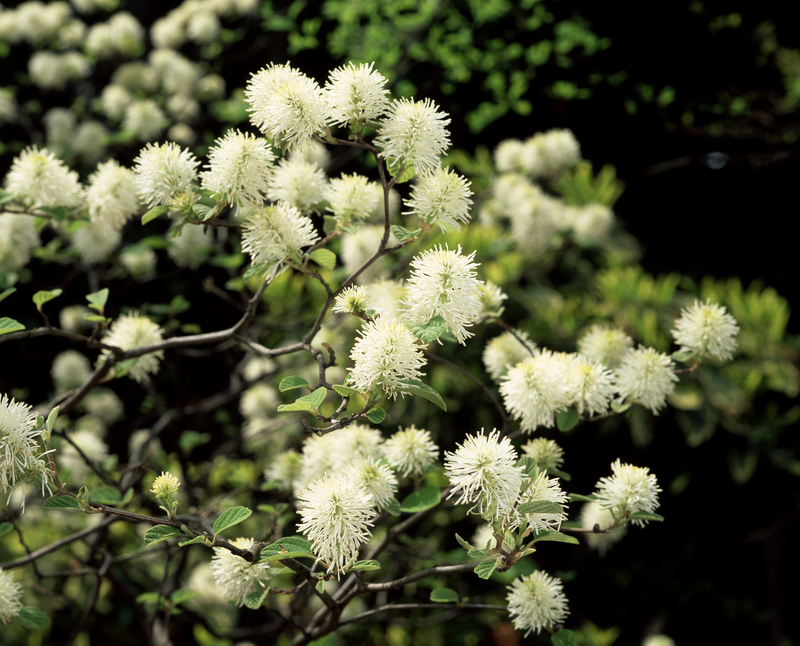Preventing Parched Lawns: Tips for Beating Summer Drought
A lush, vibrant lawn is often the pride of any homeowner, homeowner's association, or business landscape. Yet, maintaining the health of your turf during the scorching summer months can be a daunting challenge. When temperatures rise, rainfall diminishes, and the sun beats down mercilessly, a summer drought can quickly turn once-green grass into a brittle, brown patchwork. However, with the right strategies for drought prevention, you can keep your lawn thriving, resilient, and eye-catching throughout the hottest months of the year.
Understanding the Impact of Summer Drought on Lawns
Why do lawns suffer during a summer drought? The combination of intense heat, insufficient water, and stress caused by nutrient depletion can overwhelm grass, leaving it unable to grow or regenerate. Prolonged periods without adequate rainfall, combined with high evaporation rates, starve your turf of the moisture it needs.
Drought stress manifests as:
- Discolored or brown grass blades
- Wilted or curled leaves
- Stunted growth or thinning patches
- Increased vulnerability to pests and weeds
Fortunately, implementing preventative drought strategies can minimize damage, reduce water usage, and promote a greener, healthier lawn.

Best Practices for Drought-Resistant Lawns
1. Choose the Right Grass Species
Selecting drought-tolerant grass varieties is the foundation of a resilient lawn. While cool-season grasses, such as Kentucky bluegrass and fescues, can suffer in intense heat, warm-season grasses naturally handle drought better.
- Bermuda grass: Excellent tolerance to heat and dry conditions.
- Zoysia grass: Slow-growing but robust against drought and foot traffic.
- Buffalo grass: Native to drought-prone regions and requires minimal water.
- St. Augustine grass: Thrives in hot, sunny climates.
When starting from scratch or overseeding, consider these varieties for the most drought-resistant lawn.
2. Water Properly and Efficiently
The biggest mistake most homeowners make is watering lightly and frequently. Instead, deep and infrequent irrigation encourages roots to penetrate deeper into the soil - making them stronger and more drought-resistant.
- Water early in the day: Early morning is best, as there's less evaporation. Avoid late evening watering to minimize fungal disease.
- Soak the soil: Apply about one inch of water once or twice per week, rather than short daily bursts.
- Adjust to rainfall: Use rain gauges or moisture sensors to adjust your watering schedule according to recent precipitation.
- Check for runoff: If water is pooling or running off, stop, let it soak in, and water again.
Smart irrigation practices not only conserve water during drought but also promote deep-rooted, healthy lawns.
3. Mow High and Less Often
Short, scalped grass is far more vulnerable to heat stress and evaporation. To defend your lawn during a summer drought, follow these mowing tips:
- Raise your mower blade: Keep grass at least 3 inches tall to retain soil moisture and shade the roots.
- Mow infrequently: Only trim about one-third of the blade height at a time. During droughts, mowing may be needed less often.
- Leave clippings behind: Grass clippings return nutrients and help lock in moisture.
- Keep mower blades sharp: A dull blade tears rather than cuts, increasing stress and moisture loss.
4. Enrich Soil Health
Healthy lawns begin with healthy soil. Well-structured, nutrient-rich soil retains more water and fosters deeper root systems.
- Aerate annually: Aeration opens compacted earth, enabling roots to access water and nutrients more easily.
- Top-dress with compost: Compost adds organic matter, improving soil structure, water retention, and nutrient content.
- Test and amend: Conduct a soil test and adjust pH, phosphorus, and potassium levels as needed for optimal grass growth.
- Apply mulch: Mulching the lawn borders and garden beds insulates the soil and reduces water loss.
5. Fertilize Carefully
Excessive fertilization during drought can do more harm than good. Fertilizers can burn stressed grass, especially when water is scarce.
- Apply in spring: Fertilize before the heat sets in to boost root health ahead of drought periods.
- Skip summer feedings: Suspend fertilizer applications during extreme heat or when drought stress is severe.
- Use slow-release formulas: These deliver nutrients gradually, reducing the risk of overfeeding or leaching.
Always water thoroughly after fertilizing to avoid chemical burn and promote nutrient absorption.
6. Minimize Lawn Traffic
Parched grass is fragile. Foot traffic, pets, and lawn equipment can damage dry lawns, compounding recovery time.
- Encourage family and guests to use walks or patios during drought.
- Keep heavy machinery off the lawn when the soil is dry and brittle.
7. Address Weeds, Pests, and Disease Promptly
Weeds compete for precious moisture and nutrients during drought, while pests and diseases prey on weakened turf. Integrated lawn management includes:
- Hand-dig stubborn weeds instead of using herbicides, which can further stress the lawn.
- Spot-treat pest outbreaks with targeted management techniques.
- Monitor for fungus and mold: Address rapidly, as stressed lawns have less resistance.
Advanced Drought Prevention Tactics
Smart Irrigation Technology
Embrace innovation to reduce water waste and maximize lawn hydration. Smart irrigation systems, such as Wi-Fi-enabled controllers, soil moisture sensors, and rain shutoff devices, allow precise, automated watering based on your lawn's actual needs.
- Drip irrigation: Utilizes minimal water and targets roots directly.
- Weather-based timers: Adjust automatically according to rainfall, temperature, and humidity.
- Watering zones: Different areas (sunny, shady, hilly) may require unique schedules for efficiency.
Mulching and Groundcovers
Mulching isn't just for garden beds. A light layer of organic mulch, such as shredded leaves or finely chopped bark, can insulate lawn edges and problem patches to conserve moisture.
Alternatively, consider drought-tolerant groundcovers for areas unsuited to traditional turf:
- Clover: Low-growing, nitrogen-fixing, and drought-resilient.
- Creeping thyme: Hardy and fragrant, too!
- Sedum and succulents: Ideal for hard-to-water slopes and sunny fringes.
Hydrophobic Soils: How to Manage Them
During extended dry spells, soil can become hydrophobic--repelling water rather than absorbing it. This means your irrigation simply runs off without soaking in.
- Break up the soil surface: Gently rake or aerate to improve penetration.
- Use soil wetting agents: Specialized products help water absorb and disperse more effectively.
- Mulch heavily: Insulate and help moisture permeate and linger.
Proactive Care: Preparing for Next Summer's Drought
Create a Lawn Care Calendar
Drought prevention isn't a one-time fix--it's a year-round commitment. Set a simple schedule to stay ahead of stress:
- Winter/Spring: Overseed with drought-tolerant species, aerate, and apply compost or slow-release fertilizers.
- Early Summer: Assess watering systems, check soil health, and set mower blades high. Mulch and monitor for weeds and pests.
- Peak Summer: Water deeply (if permitted), mow sparingly, and minimize activity on the turf. Watch for early warning signs of stress.
- Fall: Repair any drought damage, seed thin patches, and feed lawns with fall-specific fertilizers to strengthen roots for next year.
Reimagine Your Landscape
If water conservation is a priority in your region, evaluate your landscape holistically:
- Reduce turf area: Incorporate patios, beds, and hardscaping to lessen maintenance.
- Plant native species: Local flora typically requires less water and thrives even during dry spells.
- Harvest rainwater: Use barrels or cisterns to supplement irrigation during drought restrictions.

Frequently Asked Questions About Preventing Parched Lawns
-
Q: How often should I water my lawn during a drought?
A: Deep water once or twice per week, ensuring about one inch of water per session. Adjust for weather, soil, and grass type. -
Q: Should I fertilize my lawn during a drought?
A: No. Avoid fertilizing when grass is stressed by heat or insufficient moisture. -
Q: Will my lawn die during a drought?
A: Most turf grasses go dormant and turn brown but can recover when rain returns. Proper care increases their survival odds. -
Q: Can I revive a dead lawn after drought?
A: If roots remain intact, your lawn will likely recover with rain and care. Severely damaged areas may require reseeding or patching. -
Q: Is there a best time of day to water?
A: Early morning is ideal to minimize evaporation and fungal risks.
Conclusion: Achieve a Healthy, Drought-Proof Lawn
Preventing a parched lawn doesn't have to be an endless battle against nature. By choosing the right drought-tolerant grasses, adapting your watering and mowing routines, enriching soil health, and staying proactive about weed and pest control, you can cultivate a landscape that stands strong against summer's harshest conditions.
Remember: The health of your lawn is a year-round commitment--what you do in the cool months prepares your turf to weather the challenges of summer drought. With these tips, your lawn can beat the heat, conserve water, and stay green and healthy through every summer's dry spell!
For tailored advice, consult your local extension office or professional landscapers specializing in drought prevention for lawns in your specific region. Together, you can design a sustainable, eco-friendly lawn that's beautiful and water-wise!